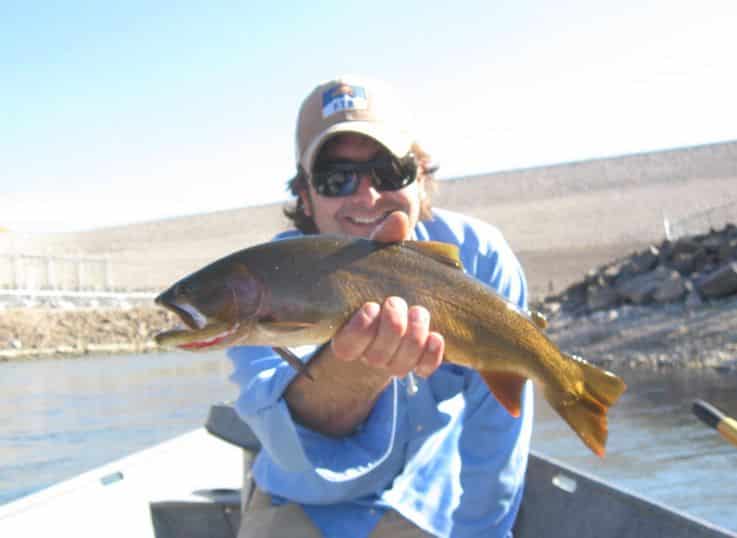This post was last updated on May 6th, 2014 at 08:52 pm
Yellowstone Cutthroat Trout History and Facts ( Oncorhynchus clarkii bouvieri)
 The Yellowstone cutthroat is obviously a native to Yellowstone National park area, but it is also common throughout much of Wyoming, Montana, Idaho and small areas in Utah and Arizona. There are significant efforts in many areas to attempt to preserve the integrity of the Yellowstone Cutthroats populations.
The Yellowstone cutthroat is obviously a native to Yellowstone National park area, but it is also common throughout much of Wyoming, Montana, Idaho and small areas in Utah and Arizona. There are significant efforts in many areas to attempt to preserve the integrity of the Yellowstone Cutthroats populations.
Yellowstone Lake
In Yellowstone lake there is a decent population of these cutthroats, but also a good population of lake trout. In an effort to preserve the lakes cutthroat, there has been an extreme effort to eliminate the lake trout. It is actually against the law to catch a lake trout and not kill it. This is not only because the lake trout competes for the Yellowstone cutthroats food, but because it also competes for spawning habitat. The recent decline in Yellowstone cutthroat has actually had side effects that spill over into the birds as well. The Osprey that prowl the air over Yellowstone lake have encountered tough times in unison with the cutthroats. The Cutthroat is the osprey’s primary food source in the area. The grizzly bears and eagles have been able to adapt better because of their diverse food sources. The “YC’ (Yellowstone Cutthroat) also inhabits the stretches of the Yellowstone river and Snake river.
The Snake River
There are also extreme measures being taken in the state of Idaho on the south fork of the snake river to preserve the YC. The concerns of the Idaho fish and game, are that the non native Rainbow trout will breed out the purity of the YC. Since I spend an enormous amount of time on the snake river in Idaho, I have seen many examples of hybrids. They are commonly referred to as “Cutbows” or cutthroat/rainbow trout hybrids. The Idaho fish and game encourages fisherman to keep the rainbow trout to prevent this from occurring. They have actually created somewhat of a bounty system to get people to remove the rainbows. (I will expand more on this in another section.)
Catch and Release Efforts
Just like most Cutthroat trout, the YC is in trouble due to mining, logging and non native fish introduction. It is against the law to kill a Cutthroat in the snake river in Idaho. The same can be said for the Yellowstone River in Yellowstone National Park. There have been efforts as recently as 2004 by environmentalists to have the YC put on the endangered species list. It was promptly turned down by the USFW because they claim there are already significant efforts in place to maintain the species.
Identification
The Yellowstone Cutthroat can be identified by its larger black spots, clustered towards the tail and by their gold, gray, or copper hues on their body. Spawning males, especially, typically wear dark golden brown shades.
Here is a very informative Pdf file about the Yellowstone Cutthroat trout by Idaho fish and Game
The Snake River Fine spotted Cutthroat Trout
The Fine spotted Cutthroat trout is a form of the Yellowstone Cutthroat. It is differentiated from the standard YC by its smaller sized spots. It is one of the more aggressive cutthroat species. It has a tendency to eat mammals and other fish more so than most other species. It will frequently participate in the large hatches that the snake river provides, but it will also spend a considerable amount of time eating other food items. This is the only type of cutthroat trout that I have personally managed to catch after dark on a deer hair mouse pattern.
